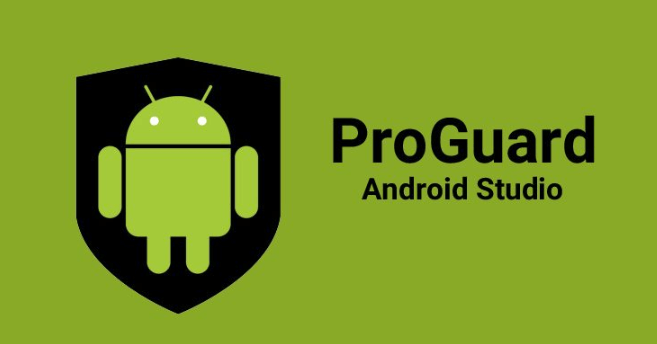When is the best time to use Proguard?

ProGuard is an incredibly useful tool for optimizing, obfuscating, and securing Android apps. However, knowing when to apply ProGuard during the development process is key to maximizing its benefits with AppSealing. Using ProGuard too early can complicate debugging and slow iterations. Applying it too late forfeits opportunities to strengthen security. This article explores the ideal times to leverage ProGuard for new and existing apps.
New app development
For apps in the initial stages of development, ProGuard may not provide much immediate value. ProGuard shines once substantial code and resources have been authored. Obfuscating minimal code or resources early on does not offer significant gains.
During active development, readability and debuggability take priority over optimization and obfuscation. Development velocity slows down if code is obscured before features are finished. The development stage focuses on functionality rather than hardening.
Instead, introduce ProGuard after key functionality is implemented and testing is underway. This ensures that ProGuard does not impede rapid iterations and debugging. After major engineering efforts, ProGuard can optimize and secure code without being detrimental.
Testing Phase
Once development winds down, the testing phase presents a prime opportunity to employ ProGuard. At this point, core functionality is complete, and testing helps uncover bugs before release. Enabling ProGuard during testing pushes apps to behave properly under obfuscation.
Testing with ProGuard exposes any issues caused by renaming classes and members. Developers can address problems like missing metadata and reflection lookups. ProGuard may break functionality that implicitly relies on original names. Running tests validates that everything still works after obfuscation.
The testing period also affords time for tuning ProGuard configurations. Advanced options like encryption and optimizations can be experimented with to find optimal settings before launch. Leveraging ProGuard during testing hardens apps for production.
Build Validation
Right before apps are officially built and deployed is an indispensable time to integrate ProGuard. At this point, all features are done, testing is complete, and apps undergo final release preparations. ProGuard reinforces security as a last step before apps go live.
Build validation ensures releases only include obfuscated versions of apps. This guards against accidentally releasing unsecured debug builds into production. ProGuard also strips unused resources and bloat from final builds to shrink the app attack surface and footprint.
Making ProGuard mandatory before deployment guarantees apps are locked down and protected when users download them. Apps published with lax security are easy targets. Running ProGuard during build validation leaves no room for mistakes.
Existing App Hardening
For live apps that were initially launched without ProGuard, it is never too late to add this protection. Enabling ProGuard for existing apps forces them to synchronize with the obfuscated state. Any code based on original artifacts must be updated.
Transitioning existing apps maximizes security with minimal overhead once finished. Apps gain the benefits of a smaller attack surface, thwarted reverse engineering, and optimization. ProGuard can be integrated slowly, starting with newer components, and progressively expanded.
Updating apps with ProGuard may take more work upfront. However, this effort pays off long-term with more resilient app protection. Retrofitting ProGuard also future-proofs apps as new vulnerabilities emerge.
Major app updates
When working on large app updates or new feature rollouts, employing ProGuard is recommended before release. Major updates often introduce significant amounts of new code and resources to apps. Running ProGuard secures these new components.
Big updates also present opportunities to fine-tune ProGuard configurations using the latest techniques. For example, rules can enforce newer TLS standards for network communications. Existing app code can be re-obfuscated using improved algorithms.
Updating ProGuard rules concurrently with large feature updates ensures consistency. Newly added code follows the same protections as existing code. Keeping ProGuard configurations up-to-date improves cross-version robustness as apps evolve.
Integration Testing
When testing how apps integrate with external systems like APIs, databases, and SDKs, ProGuard should be enabled. Many integration issues arise from environmental discrepancies between development and production.
Obfuscating code uncovers integration bugs stemming from declarations being renamed. For example, an API may break if it relies on specific method names that no longer exist post-obfuscation. ProGuard reveals integration points needing attention.
Smooth integration with external systems relies on using proper abstractions, so naming changes are opaque. Running integration tests with ProGuard confirms everything still communicates properly after obfuscation.
Continuous Integration
Adding ProGuard verification to continuous integration (CI) pipelines is highly recommended. This automates checking for ProGuard-related issues on every code commit. If commits break obfuscated builds, it prevents problematic code from merging.
CI checks incentivize developers to consider ProGuard compatibility from the start. Issues surface and are fixed early before being forgotten. Automated testing with ProGuard enables rapid iteration on configuration tuning.
ProGuard CI checks also prevent configuration drift over time as codebases scale. New developers learn to develop ProGuard-first. Automation increases consistency by applying ProGuard across an engineering organization.
Before Public Beta Releases
For apps going through a staged rollout, incorporating ProGuard before public beta releases is prudent. At this point, apps have passed internal testing and are nearly ready for production. ProGuard gives beta releases hardened protection.
Obfuscating apps for public beta testing also provides validation at scale. Any lingering issues get detected and fixed before general availability. Public betas offer a dry run for ProGuard in real-world environments under diverse usage conditions.
Read also Elevating Beauty Routines: The Miraculous Benefits of Copper Peptide Serum
Hardening apps pre-beta reduces exposure if vulnerabilities emerge post-launch. Proper release cadence calls for toughening the security posture before broad external distribution.
Acquisition Diligence
When acquiring companies and apps, enabling ProGuard helps assess technical quality. Obfuscated code challenges buyers to evaluate apps based on intrinsic design rather than superficial structure.
ProGuard reveals disciplined abstraction and architecture not apparent from reading raw code. The due diligence process uncovers how gracefully apps withstand and behave under obfuscation. This provides insights into underlying coding practices.
Assessing acquisitions with ProGuard identifies areas needing remediation or refactoring. Inheriting apps with ProGuard verifies assets are hardened to meet security standards.
Conclusion
Determining the optimal timing is key to effectively leveraging ProGuard. Introducing ProGuard too early slows development velocity. Too late forfeits opportunities to maximize security. Testing, build validation, integration testing, CI, and major updates present prime times to apply proguard. A pragmatic approach balances development agility with rigorous security. ProGuard significantly strengthens protection, but thoughtfully choosing when to apply it ensures smoother adoption.






